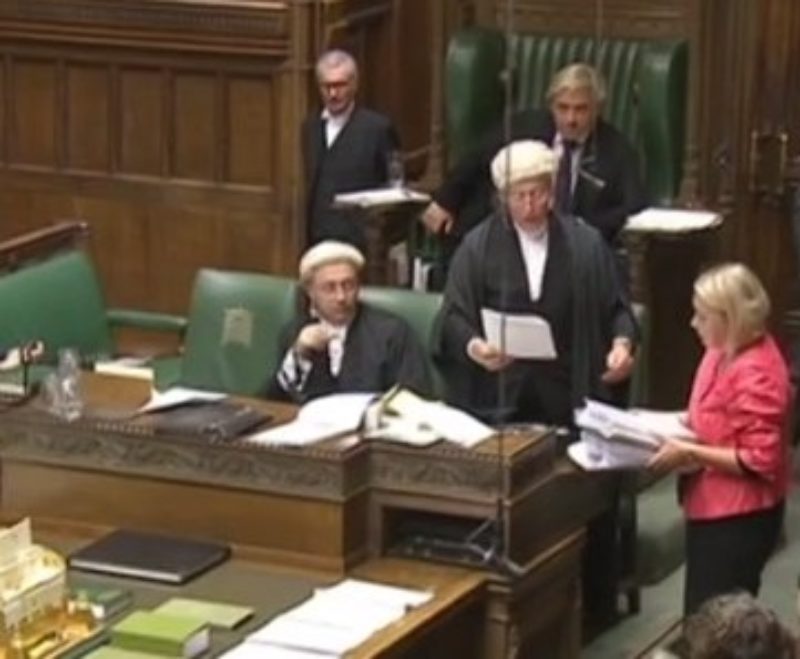Barbara Keeley Labour Member of Parliament for Worsley & Eccles South
Petitions

Petitions are a good way of letting Parliament know what issues you feel strongly about and would like to see debated. Petitions can take the form of an online ‘e-petition’ or a paper petition that has been handwritten or printed.
E-Petitions
The instructions for starting an e-petition are online at https://petition.parliament.uk/
E-petitions have to ask for a specific action from the government or the House of Commons and should be about something which the Government or the House of Commons is responsible for.
An e-petition will stay open on the e-petitions website for six months. If a petition receives more than 10,000 signatures, the Government will respond to the issue raised. If a petition receives more than 100,000 signatures it will be considered for debate in the House of Commons.
Paper Petitions
As an MP I am able to present a petition to the House of Commons on behalf of constituents.
Unlike e-petitions, public (or paper) petitions can only be presented to the House by an MP.
I can present the petition informally by putting it into the ‘petitions bag’ with the Clerk of Public Petitions or I can present it formally in person on the floor of the House of Commons. The formal process allows me to make a short statement to explain who has signed the petition and what the petition is about.
In order for me to present a petition the most important rule is that the petition must ask clearly for the House of Commons to take some action. This action has to be something which the House of Commons has the power to do, or ask the Commons to urge the Government to take action.
Regardless of how a public petition is presented to the House of Commons, the same thing happens to it afterwards:
• The petition is printed in Hansard (the Official Report of the proceedings of Parliament) and recorded in the Votes and Proceedings (which becomes the Journal).
• The text of the petition is sent to the Government department responsible for the subject matter of the petition.
• The petition would normally receive a response (known as an ‘observation’) from the department within two months of it being presented, but this might take a bit longer if there has been a recess. The response is printed in Hansard.
• The Petitions Committee oversees both public petitions and e-petitions submitted through the House of Commons and Government e-petitions website. It can recommend further action on certain petitions.
How to write a petition
There is a strict format that the wording of a petition should follow. The front page of the petition for signing must have all the following text:
To the House of Commons.
(All petitions must be addressed to the House of Commons. Starting a petition like this helps to make it clear who your petition is for.)
The petition of…
(Include a brief description of the petitioners here. This is usually something like “the residents of Winton” or “the residents of Worsley & Eccles South”.)
Declares that…
(Describe the problem or issue that your petition is about. Make sure it is clear to someone who isn’t familiar with the issue or your local area. This part of the petition has to be one sentence. If you are making more than one point, split the phrases with semi-colons; followed by “further that…”; your final phrase should be led by “and further that…”.)
The petitioner(s) therefore request that the House of Commons urges the Government to do all in its power to…
(State very clearly what you want the House of Commons to do about your issue.)
And the petitioner(s) remain, etc.
(This phrase stands alone to signify the end of the petition wording. You don’t need to change it or add anything.)
For example:
To the House of Commons.
The petition of the residents of [Ward or Constituency name].
Declares that … [; further that …; further that…; and further that …]
The Petitioners request that the House of Commons urges the Government to do all in its power to …
And the Petitioners remain, etc.
All following pages of the petition must have this explanation sentence at the top of the page: The Petitioners request that the House of Commons urges the Government to do all in its power to… [repeat your request of the fourth line above.]
Rules of submitting a petition
A petition must also adhere to the following rules, many of which are common sense:
• It should use respectful language and must not be offensive.
• It must have no crossings out, deletions or extra text added to it after it has been signed.
• It must be clear that the final petition is the same one that the petitioners signed.
• It should be in English, or if not in English accompanied by a translation certified by an MP.
• It should have the names, addresses and original, handwritten signatures (photocopies and electronic signatures are not permitted) of the petitioners.
• The signatures should match the description of the petitioners (i.e. if the description is ‘The petition of residents of the UK’, the signatures should be of residents of the UK).
• It should contain the full petition text with signatures on the first sheet and just the ‘prayer’ of the petition (the paragraph beginning ‘the petitioners therefore request’) on any subsequent sheets of signatures.
You can see the full Parliamentary guidance online here.
If you have a petition that you would like me to present to the House of Commons, please contact my Westminster office who will be happy to help.
